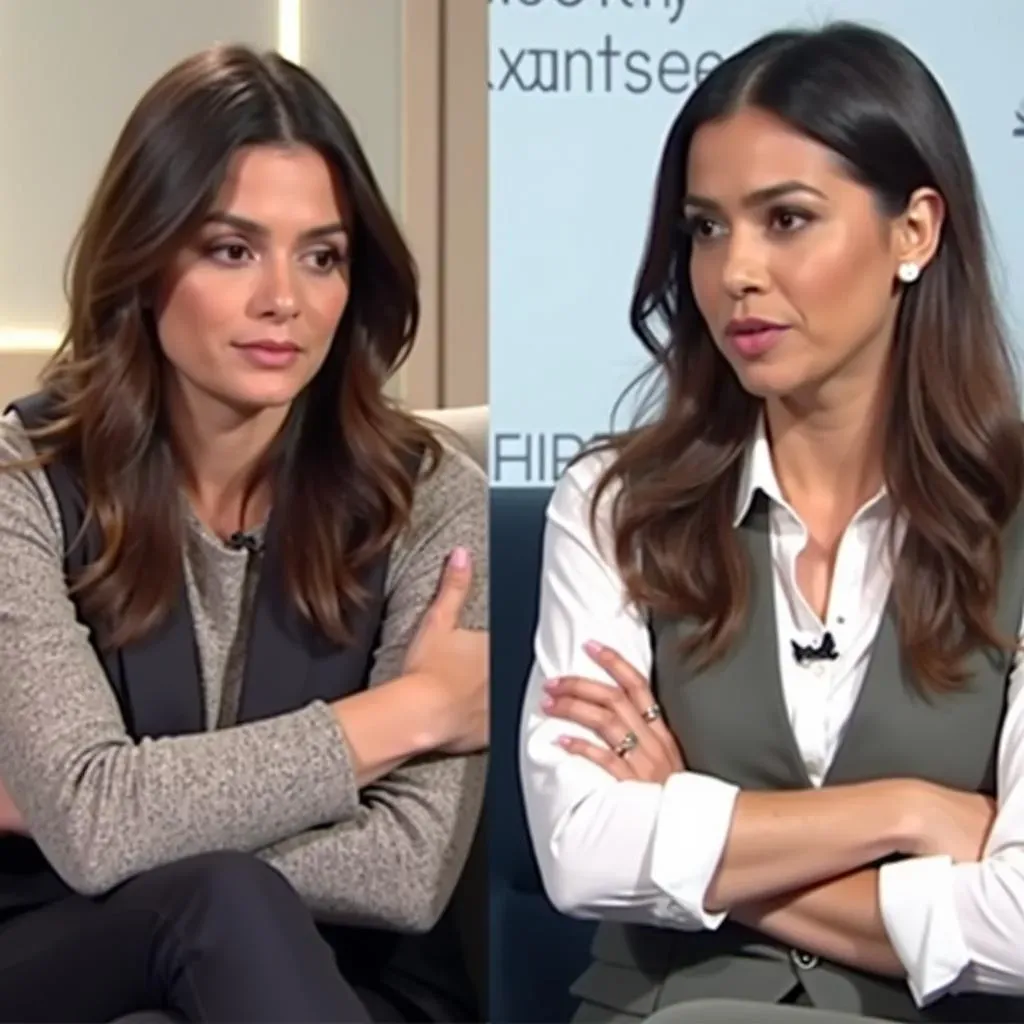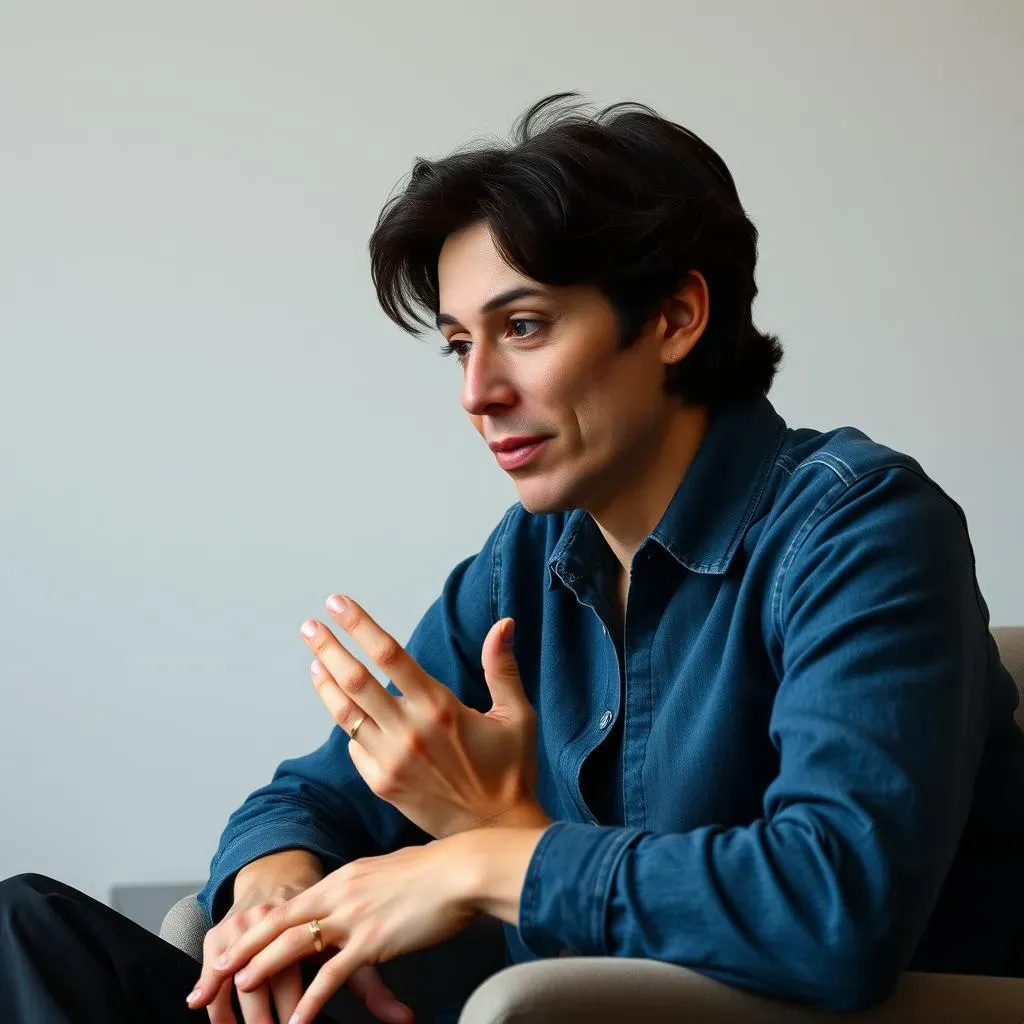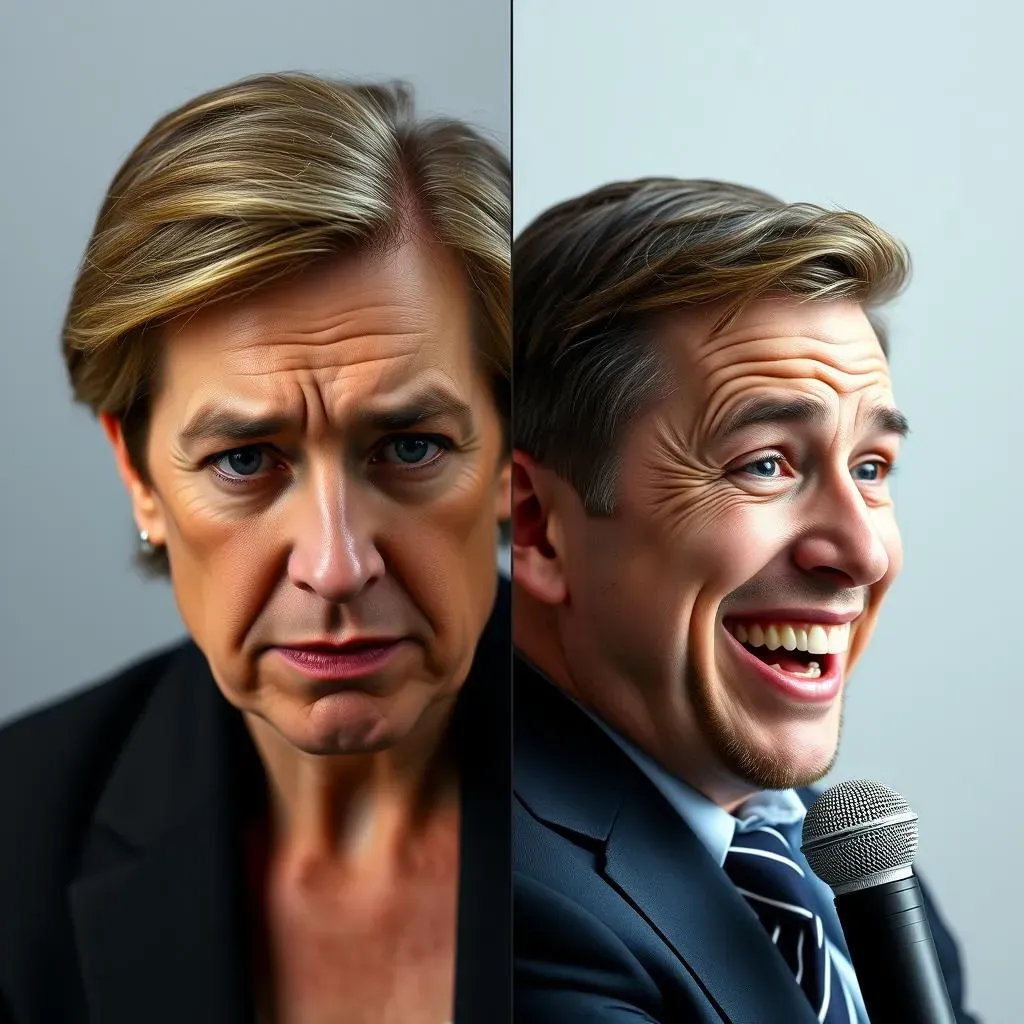Table of Contents
Have you ever watched a celebrity interview and felt like something wasn't quite adding up? Maybe a smile seemed a little too wide, or a nervous fidget gave away more than words could. That's the fascinating world of celebrity interviews body language analysis! We're not just listening to what stars say, but observing what their bodies are telling us too. In this article, we'll peel back the layers of nonverbal communication, exploring how subtle cues like eye contact, hand gestures, and posture can reveal hidden emotions and intentions. We'll start with the basics, learning how to spot common body language signals. Then, we'll move on to analyze real celebrity interviews, putting our newfound knowledge to the test. Get ready to become a body language detective because, by the end of this, you'll never watch a celebrity interview the same way again. So, buckle up and get ready for a fascinating journey into the silent world of nonverbal communication in the spotlight.
The Basics of Body Language in Celebrity Interviews

The Basics of Body Language in Celebrity Interviews
Okay, so you're diving into the world of body language in celebrity interviews? It's like learning a secret code, and trust me, it's way more interesting than algebra. Think of body language as a celebrity's second voice, often saying what they can't or won't put into words. We're talking about everything from the tiny twitch of an eyebrow to the way they position their bodies. These are not random movements; they're often unconscious signals revealing underlying feelings and thoughts. For instance, someone who's uncomfortable might avoid eye contact or fidget a lot. Conversely, someone confident might maintain steady eye contact and use open, relaxed gestures. It’s a fascinating dance of verbal and nonverbal cues, and understanding it can give us a much richer picture of what's really going on during those high-stakes interviews.
It’s not about making wild guesses, though. It's about paying close attention to clusters of signals. One gesture alone might not mean much, but when you see several signals happening together, it starts to paint a more accurate picture. For example, someone crossing their arms might just be cold, but if they're also avoiding eye contact and leaning away, it's more likely they're feeling defensive or closed off. We also have to keep context in mind. A celebrity might be naturally fidgety, so we can't assume that every fidget equals discomfort. It’s about looking for deviations from their normal behavior, the tells that pop up when they are under pressure or feeling a particular emotion. It's like being a detective, but instead of fingerprints, we're looking at microexpressions and subtle shifts in posture.
Body Language Cue | Possible Meaning | Example |
|---|---|---|
Eye Contact | Direct = Engagement, Averted = Discomfort/Deception | A celebrity looks directly at the interviewer when answering a question. |
Hand Gestures | Open = Honesty, Closed = Nervousness/Defensiveness | A celebrity uses open hand gestures while talking about a passion project. |
Posture | Leaning In = Interest, Leaning Away = Disinterest/Discomfort | A celebrity leans back in their chair when asked about a controversial topic. |
Analyzing Common Body Language Cues

Analyzing Common Body Language Cues
Alright, let's get into the nitty-gritty of analyzing common body language cues. It’s like learning the alphabet of nonverbal communication; once you know the basics, you can start reading full sentences. One of the most telling cues is eye contact. When someone is genuinely engaged, they usually maintain eye contact, but it's not a creepy, intense stare. It’s a comfortable, natural connection. However, if someone avoids your gaze, it might signal discomfort, dishonesty, or even shyness. It’s not a foolproof sign, but it's a key piece of the puzzle. Then, there are the microexpressions—those fleeting facial expressions that flash across someone's face in a fraction of a second. These are often involuntary and can reveal true feelings that someone might be trying to hide. Think of it like a quick peek behind the mask.
Next up, we have hand gestures. Open palms often indicate honesty and openness, while closed fists or crossed arms can signal defensiveness or discomfort. Pay attention to how someone uses their hands. Are they using them to emphasize their points, or are they keeping them hidden? Posture is another big one. Leaning in usually shows interest and engagement, while leaning back can suggest disinterest or detachment. The way someone holds their body can speak volumes about their level of comfort and confidence. For example, someone who is feeling confident might sit up straight with their shoulders back, while someone who is feeling insecure might slouch or try to make themselves smaller. These cues are not isolated events, though. You need to look for clusters of cues to get a more accurate reading. It’s like a symphony; all the instruments need to play together to create a complete picture.
Cue | Description | Possible Interpretation |
|---|---|---|
Eye Gaze Direction | Where a person is looking | Up and to the right: Visual recall, Down and to the left: Internal dialogue |
Lip Movements | Pressing, biting, or pursing lips | Anxiety, holding back information, disagreement |
Head Tilts | Tilting the head to one side | Interest, curiosity, or consideration |
Case Studies: Celebrity Interviews Under the Microscope

Case Studies: Celebrity Interviews Under the Microscope
The "Honest" Politician: A Case of Contradictory Cues
Okay, let's dive into a real-world example, shall we? Imagine a politician giving an interview about a controversial topic. They're saying all the right things, expressing empathy and understanding, but their body language tells a different story. Their eyes are darting around, never quite making solid contact with the interviewer. They’re using closed hand gestures, almost like they're trying to create a barrier between themselves and the questions. Their posture is stiff, and they are leaning away from the interviewer. This mismatch between words and body language creates a feeling of unease, making you question the sincerity of their statements. This is a classic case where body language screams louder than words, exposing a lack of genuine conviction. It's like they're reading from a script, but their body is saying, "I don't really believe this."
Now, you might think, "Well, maybe they're just nervous." And that's a fair point. But when these cues happen repeatedly, and consistently contradict their verbal message, it's worth paying attention to. It doesn't necessarily mean they're lying, but it suggests that they are uncomfortable with the topic or not fully committed to what they're saying. It’s like watching a play where the actor is saying one line but their movements and expressions are showing something completely different. You start to wonder what’s really going on behind the scenes. This is where the power of body language analysis really shines. It helps us see beyond the carefully crafted public persona and catch glimpses of the real person underneath.
The "Uncomfortable" Comedian: When Humor Hides Unease
Let's switch gears and look at a different scenario: a comedian during an interview about a sensitive topic. They're cracking jokes, trying to keep the mood light, but their body language betrays their discomfort. Their smiles look strained, like they’re trying too hard. They might be fidgeting with their hands, playing with their clothes, or constantly shifting in their seat. Even their laughter can sound forced or nervous. These are all signs that they are not as at ease as they are trying to appear. It's as if their body is saying, "This isn't funny at all," even though their words are trying to get a laugh.
This is a common strategy for people who feel uncomfortable. They use humor as a shield, trying to deflect attention from their true emotions. But body language often gives away the game. It’s not about calling them out or judging them, it’s about understanding the complexity of human communication. It’s like watching a magician perform a trick. You know there's a hidden layer, something more than what's visible at first glance. In this case, the magician's body is the hidden layer, revealing the true emotions behind the performance. By paying attention to these subtle cues, we can gain a deeper understanding of the person behind the persona.
Interview Scenario | Observed Body Language | Possible Interpretation |
|---|---|---|
Politician | Darting eyes, closed hand gestures, stiff posture, leaning away. | Lack of sincerity, discomfort, not fully committed. |
Comedian | Strained smiles, fidgeting, forced laughter, shifting in seat. | Unease, using humor as a shield, hiding true emotions. |